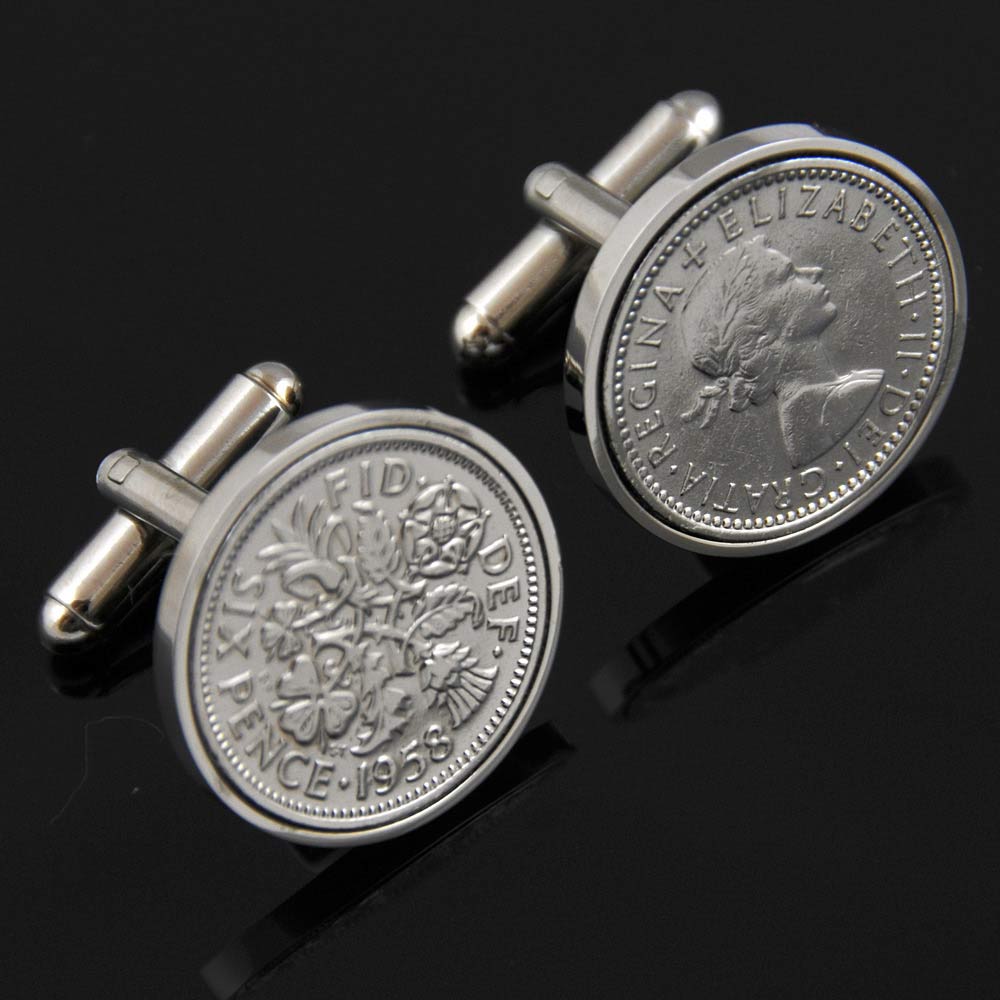
22 Sep Coin Cufflinks
It was in the ancient times when the exchange of goods and services was carried out through barter system that the need for money was felt. People exchanged one or more commodities that they had for other commodities that they needed. This system was basically arbitrary and the exchange quantity or value of each commodity could not be precisely determined or decided. The need for a common exchange medium arises and the concept of money was born.
As a consequence, different countries adopted their system of commodity money which gradually got transformed into the system of representative money. Traditionally, gold and silver merchants followed the practice of issuing receipts to the depositors that were valid for the commodity money deposited. These receipts further represented money and were accepted as a mode of payment.
Gradually, developments occurred and so did banknotes or paper money. First use of paper money was made in China during Song Dynasty but it was not a replacement for commodity money. The first official banknotes were issued in Europe by Stockholm Banco in 1661 and were used along with coins.
The use of coins, a form of money, started from ancient Greece and was first used by the Lydians. Many archaeologists believed coins to be invented by Indians between 6th and 5th century BC, while others firmly state its origin to be in Lydia, an Ancient Greek colony. The first coins of Lydia did not include any writing inscription but an image of a symbolic animal. The dating of the coins had been calculated with the help of archaeological evidences and the inscriptions on the coins.
The King Croesus of Lydia was the first one to make pure gold and silver coins. The same coins were later legally issued by the Archaemenid Empire of the Persians. The gold coins were named ‘darics’ and silver were named as ‘sigloi’. In Europe, coins are believed to have originated in 550 BC in a European island, Aegina. Swiss 1424 St. Gallen silver Plappart was the first European coin to have an inscription of Arabic numerals to date its year of existence.
Money basically performs a vital role in any economy.
Money represents the economy of a country. Each country has a unique currency represented by notes and coins. Money is a mode of exchange and includes coins and notes as its forms. These coins and currency notes have a particular symbol that is unique and uniform for each country. The first coins had no inscriptions on them. But with developments, these were inscribed with archaeological pictures that represented the era in which these coins were minted. With further developments, these inscriptions were moved to be a particular symbol of the country like the national emblem, national leader, or the national animal, or other similar symbols.
Today, each country in the world has its unique currency to carry out exchange activities and also possesses its unique currency notes and coins.